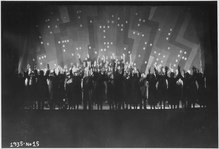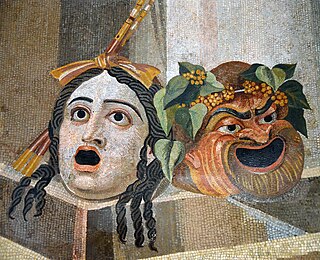
Tragicomedy is a literary genre that blends aspects of both tragic and comic forms. Most often seen in dramatic literature, the term can describe either a tragic play which contains enough comic elements to lighten the overall mood or a serious play with a happy ending. Tragicomedy, as its name implies, invokes the intended response of both the tragedy and the comedy in the audience, the former being a genre based on human suffering that invokes an accompanying catharsis and the latter being a genre intended to be humorous or amusing by inducing laughter.

Clifford Odets was an American playwright, screenwriter, and actor. In the mid-1930s, he was widely seen as the potential successor to Nobel Prize–winning playwright Eugene O'Neill, as O'Neill began to withdraw from Broadway's commercial pressures and increasing critical backlash. From January 1935, Odets's socially relevant dramas were extremely influential, particularly for the remainder of the Great Depression. His works inspired the next several generations of playwrights, including Arthur Miller, Paddy Chayefsky, Neil Simon, and David Mamet. After the production of his play Clash by Night in the 1941–42 season, Odets focused his energies primarily on film projects, remaining in Hollywood until mid-1948. He returned to New York for five and a half years, during which time he produced three more Broadway plays, only one of which was a success. His prominence was eventually eclipsed by Miller, Tennessee Williams, and, in the early- to mid-1950s, William Inge.

The Federal Theatre Project was a theatre program established during the Great Depression as part of the New Deal to fund live artistic performances and entertainment programs in the United States. It was one of five Federal Project Number One projects sponsored by the Works Progress Administration, created not as a cultural activity but as a relief measure to employ artists, writers, directors, and theater workers. National director Hallie Flanagan shaped the FTP into a federation of regional theaters that created relevant art, encouraged experimentation in new forms and techniques, and made it possible for millions of Americans to see live theatre for the first time. Although The Federal Theatre project consumed only 0.5% of the allocated budget from the WPA and was widely considered a commercial and critical success, the project became a source of heated political contention. Congress responded to the project's racial integration and accusations of Communist infiltration and cancelled its funding effective June 30, 1939. One month before the project's end, drama critic Brooks Atkinson summarized: "Although the Federal Theatre is far from perfect, it has kept an average of ten thousand people employed on work that has helped to lift the dead weight from the lives of millions of Americans. It has been the best friend the theatre as an institution has ever had in this country."

The Laramie Project is a 2000 American play by Moisés Kaufman and members of the Tectonic Theater Project about the reaction to the 1998 murder of gay University of Wyoming student Matthew Shepard in Laramie, Wyoming. The murder was denounced as a hate crime and brought attention to the lack of hate crime laws in various states, including Wyoming.

Epic theatre is a theatrical movement that arose in the early to mid-20th century from the theories and practice of a number of theatre practitioners who responded to the political climate of the time through the creation of new political dramas. Epic theatre is not meant to refer to the scale or the scope of the work, but rather to the form that it takes. Epic theatre emphasizes the audience's perspective and reaction to the piece through a variety of techniques that deliberately cause them to individually engage in a different way. The purpose of epic theatre is not to encourage an audience to suspend their disbelief, but rather to force them to see their world as it is.
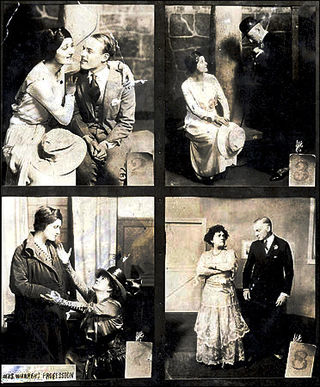
The problem play is a form of drama that emerged during the 19th century as part of the wider movement of realism in the arts, especially following the innovations of Henrik Ibsen. It deals with contentious social issues through debates between the characters on stage, who typically represent conflicting points of view within a realistic social context. Critic Chris Baldick writes that the genre emerged "from the ferment of the 1890s... for the most part inspired by the example of Ibsen's realistic stage representations of serious familial and social conflicts." He summarises it as follows:
Rejecting the frivolity of intricately plotted romantic intrigues in the nineteenth-century French tradition of the 'well-made play', it favoured instead the form of the 'problem play', which would bring to life some contemporary controversy of public importance—women's rights, unemployment, penal reform, class privilege—in a vivid but responsibly accurate presentation.

Judith Malina was a German-born American actress, director and writer. With her husband Julian Beck, Malina co-founded The Living Theatre, a radical political theatre troupe that rose to prominence in New York City and Paris during the 1950s and 1960s. The Living Theatre and its founders were the subject of the 1983 documentary Signals Through The Flames.
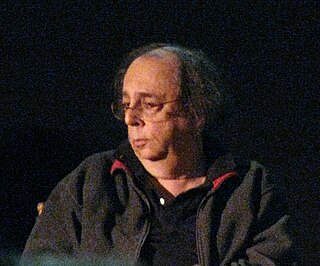
Richard Foreman is an American avant-garde playwright and the founder of the Ontological-Hysteric Theater.
A political drama can describe a play, film or TV program that has a political component, whether reflecting the author's political opinion, or describing a politician or series of political events.

Hallie Flanagan Davis was an American theatrical producer and director, playwright, and author, best known as director of the Federal Theatre Project, a part of the Works Progress Administration (WPA).
Moisés Kaufman is a Venezuelan theater director, filmmaker, playwright, founder of Tectonic Theater Project, based in New York City, and co-founder of Miami New Drama at the Colony Theatre. He was awarded the 2016 National Medal of Arts by President Barack Obama. He is best known for creating The Laramie Project (2000) with other members of Tectonic Theater Project. He has directed extensively on Broadway and Internationally, and is the author of numerous plays, including Gross Indecency: The Three Trials of Oscar Wilde and 33 Variations.

Jeffrey Hatcher is a much-produced American playwright and screenwriter. He wrote the stage play Compleat Female Stage Beauty, which he later adapted into a screenplay, shortened to just Stage Beauty (2004). He also co-wrote the stage adaptation of Tuesdays with Morrie with author Mitch Albom, and Three Viewings, a comedy consisting of three monologues - each of which takes place in a funeral home. He wrote the screenplay Casanova for director Lasse Hallström, as well as the screenplay for The Duchess (2008). He has also written for the Peter Falk TV series Columbo and E! Entertainment Television.

Traditional Japanese theatre is among the oldest theatre traditions in the world. Traditional theatre includes Noh, a spiritual drama, and its comic accompaniment kyōgen; kabuki, a dance and music theatrical tradition; bunraku, puppetry; and yose, a spoken drama.
Tectonic Theater Project is a stage and theatre group whose plays have been performed around the world. The company is dedicated to developing works that explore theatrical language and form, fostering dialogue with audiences on the social, political, and human issues that affect society. In service to this goal, Tectonic supports readings, workshops, and full theatrical productions, as well as training for students around the United States in their play-making techniques. The company has won a GLAAD Media Award.
Theatre for development (TfD) is a type of community-based or interactive theatre practice that aims to promote civic dialogue and engagement.
Slice of life is a depiction of mundane experiences in art and entertainment. In theater, slice of life refers to naturalism, while in literary parlance it is a narrative technique in which a seemingly arbitrary sequence of events in a character's life is presented, often lacking plot development, conflict and exposition, as well as often having an open ending.
Twilight: Los Angeles, 1992 is a one-woman play written and originally performed by Anna Deavere Smith, an American actress, playwright and professor. It is about the 1992 Los Angeles Uprising.
Jennifer Haley is an American playwright. She grew up in San Antonio, Texas and studied acting at the University of Texas at Austin for her undergraduate degree. Haley also received a MFA in playwriting at Brown University in 2005, where she worked under American playwright and professor, Paula Vogel. Now living in Los Angeles, Haley is pursuing a career in theatre, film and television.
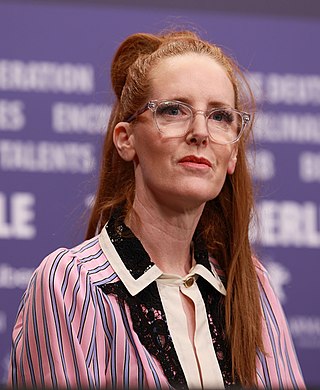
Kristina "Tina" Satter is an American filmmaker, playwright, and director based in New York City. She is the founder and artistic director of the theater company Half Straddle, which formed in 2008 and received an Obie Award grant in 2013. Satter won a Guggenheim in 2020. Satter was described by Ben Brantley of the New York Times as "a genre-and-gender-bending, visually exacting stage artist who has developed an ardent following among downtown aesthetes with a taste for acidic eye candy and erotic enigmas." Her work often deals with subjects of gender, sexual identity, adolescence, and sports.
Early Native American culture was rich with ceremonies, rituals and storytelling. The stories that inspire Native American theatre have been around for hundreds of years, but did not gain formal recognition by colonial America. This lack of recognition lasted until the 1930s when Lynn Riggs, a playwright of Cherokee descent, brought Native Theatre into the spotlight through the Six Nations Reserve Forest Theatre in Ontario. Through these events, Native Theatre has been introduced to mainstream society and contemporary Native American Theater was born. Indigenous American cultures have been a major aspect of Chicano drama.
